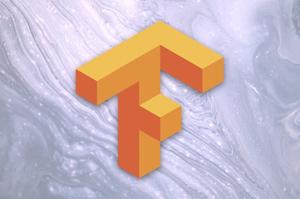Encountering an ImportError: No Module Named 'tensorflow.keras' can be frustrating, especially when you're eager to dive into machine learning projects using TensorFlow. This issue typically arises due to version mismatches or installation problems with TensorFlow. In this article, we will guide you on how to resolve this error step by step and explore some common scenarios where this issue might arise.
Understanding the Error
The error message "ImportError: No Module Named 'tensorflow.keras'" indicates that your Python environment does not recognize the tensorflow.keras module. This can happen for a few reasons:
- TensorFlow is not installed.
- An incompatible TensorFlow version is installed.
- The Python environment doesn’t include the necessary paths.
- There are multiple Python installations and you may be using the wrong one.
Step-by-Step Solution
Let's walk through potential solutions:
1. Verify TensorFlow Installation
First, ensure that TensorFlow is installed in your Python environment. You can quickly check this by running the following command in your command line or terminal:
pip show tensorflowIf TensorFlow is installed, you will see version information. If not, install it using:
pip install tensorflow2. Check TensorFlow Version
Ensure that your TensorFlow version supports the tensorflow.keras module. Integrations with Keras vary in different versions of TensorFlow:
- TensorFlow 1.x requires a manual addition to access Keras functions.
- TensorFlow 2.x integrates Keras natively.
To check the installed version, run:
import tensorflow as tf
print(tf.__version__)If you’re not using TensorFlow 2.x, consider upgrading:
pip install --upgrade tensorflow3. Ensure Environment Consistency
Ensure that your IDE or script uses the same Python environment where TensorFlow is installed. Typically, virtual environments are set up for this purpose:
python -m venv myenv
source myenv/bin/activate # On Unix/Linux
myenv\Scripts\activate # On WindowsAfter activating the environment, install TensorFlow:
pip install tensorflow4. Update Path Variables (Advanced)
If you’re managing complex projects with multiple dependencies, updating the system's PYTHONPATH may be necessary. This action generally goes hand-in-hand with tweaking IDE settings:
export PYTHONPATH="/path/to/your/project:$PYTHONPATH"Common Mistakes and Solutions
Multiple Python Versions: Ensure that you are using the correct Python executable, especially if the error persists after installation. You can locate the Python interpreter with:
which python
# or on Windows
where pythonIncorrect Imports: In some cases, users mistakenly import Keras incorrectly. In the TensorFlow 2.x architecture, the import should look like:
from tensorflow.keras import layersIf you’re still using standalone Keras, transition to using TensorFlow’s integrated Keras. If you must use standalone, install it separately:
pip install kerasConclusion
By following the steps outlined above, you should be able to resolve the ImportError regarding tensorflow.keras. Leveraging TensorFlow’s integrated Keras functionalities simplifies machine learning processes significantly. Ensuring a properly configured environment is crucial to a smooth development experience. If issues persist, consult TensorFlow’s official GitHub repository or community forums for further assistance.







